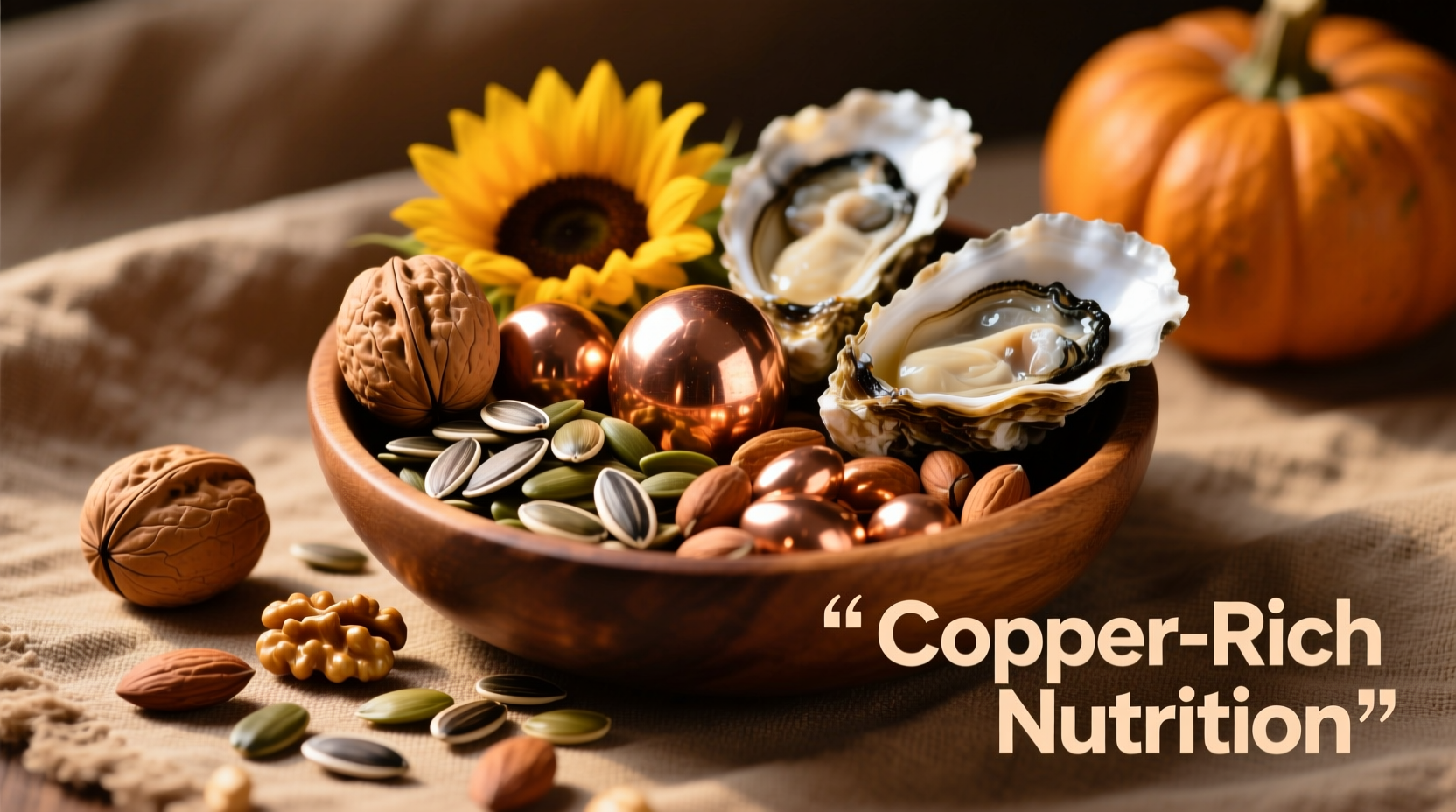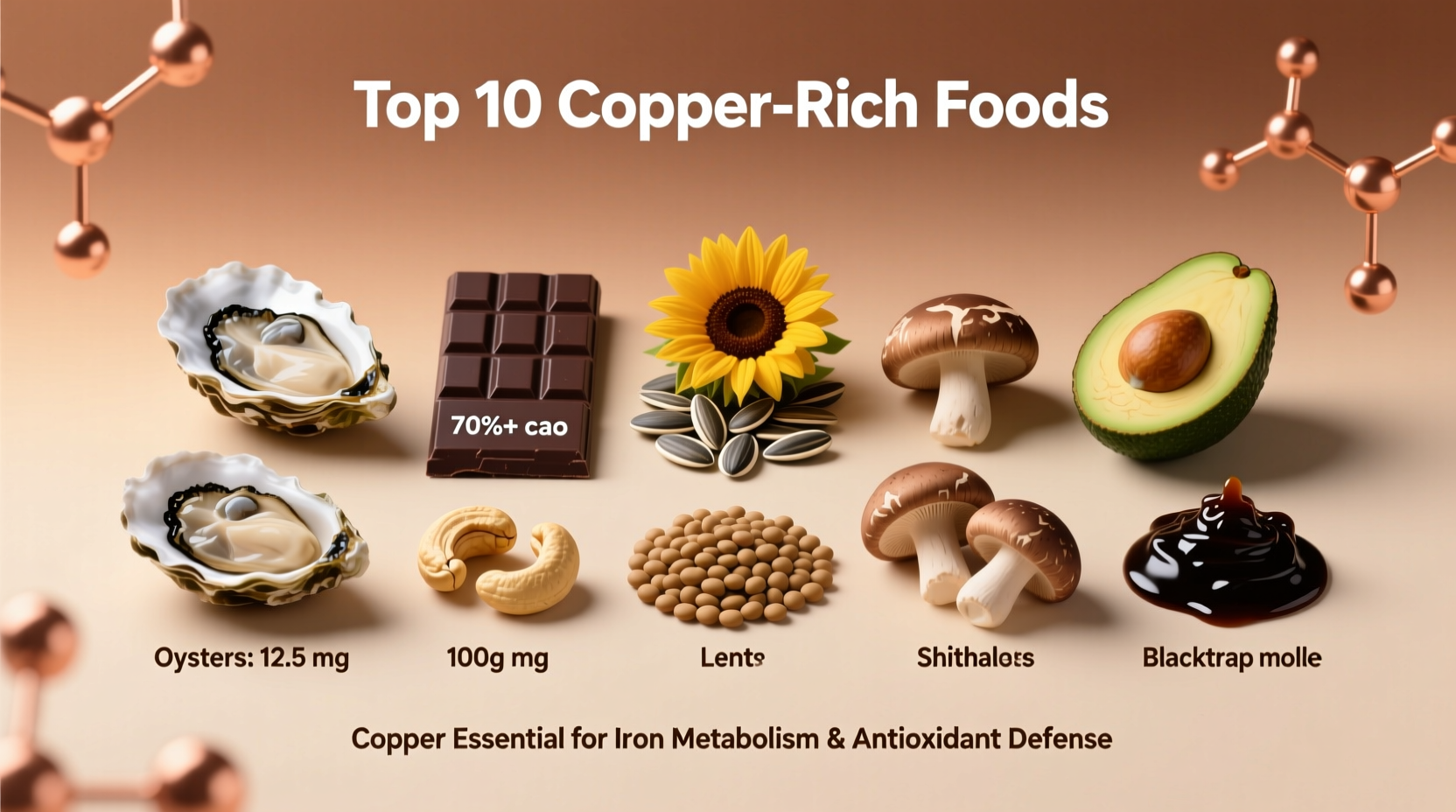Copper often flies under the nutritional radar, yet this essential trace mineral powers over 50 critical enzymatic reactions in your body. Without adequate copper intake, your energy production, iron metabolism, and connective tissue formation suffer significantly. This comprehensive guide reveals exactly which foods deliver optimal copper levels while explaining practical strategies to maximize absorption and avoid common pitfalls.
Why Copper Matters More Than You Think
Despite needing only 900 micrograms daily, copper serves as the unsung hero of your metabolic orchestra. The National Institutes of Health confirms copper's vital role in three fundamental bodily processes:
- Energy production - Copper enables mitochondria to convert nutrients into cellular energy
- Iron metabolism - Without copper, your body cannot properly utilize iron for hemoglobin production
- Antioxidant defense - Copper-zinc superoxide dismutase neutralizes harmful free radicals
Recent research from the NIH Office of Dietary Supplements reveals that marginal copper deficiency affects approximately 25% of adults, often manifesting as unexplained fatigue, weakened immunity, and brittle bones. The recommended daily allowance (RDA) stands at 900 mcg for adults, with higher requirements during pregnancy (1,000 mcg) and lactation (1,300 mcg).
Your Complete Copper Food Reference Guide
Unlike many nutrients, copper appears across diverse food groups. The USDA FoodData Central database provides precise copper measurements per standard serving. Here's how common foods stack up:
| Food | Serving Size | Copper (mg) | % Daily Value |
|---|---|---|---|
| Beef liver | 3 ounces | 14.0 | 1556% |
| Oysters | 6 medium | 5.9 | 656% |
| Sunflower seeds | 1/4 cup | 1.8 | 200% |
| Shiitake mushrooms | 1 cup | 1.4 | 156% |
| Dark chocolate (70-85%) | 100g | 1.3 | 144% |
| Lobster | 3 ounces | 1.0 | 111% |
| Chickpeas | 1 cup | 0.8 | 89% |
| Quinoa | 1 cup cooked | 0.6 | 67% |
This copper content comparison reveals important patterns: organ meats and shellfish deliver the highest concentrations, while plant-based sources like seeds, mushrooms, and legumes provide substantial amounts. Interestingly, the copper content in plant foods can vary significantly based on soil composition, with organic produce sometimes showing higher mineral density according to research published in Nutrients journal.

Practical Copper Optimization Strategies
Knowing which foods contain copper is only half the battle. Your body's ability to absorb and utilize copper depends on several factors you can control:
Maximize Absorption Through Smart Pairing
Research from the Linus Pauling Institute shows that certain food combinations dramatically improve copper bioavailability:
- Vitamin C synergy - Pair copper-rich foods with vitamin C sources (citrus, bell peppers) to enhance absorption
- Avoid zinc interference - High zinc intake (from supplements or fortified foods) can inhibit copper absorption
- Balance with iron - Copper and iron work together; include both in meals for optimal utilization
For example, try this simple copper-boosting meal: quinoa salad with chickpeas, sunflower seeds, and lemon-tahini dressing. The vitamin C from lemon enhances copper absorption from the seeds and chickpeas, while the quinoa provides additional copper and supporting nutrients.
Daily Copper Integration Plan
Instead of focusing on single high-copper meals, build consistent daily intake through these practical strategies:
- Breakfast - Add pumpkin seeds to oatmeal or smoothies (½ oz provides 0.3 mg copper)
- Lunch - Include chickpeas or lentils in salads (1 cup provides 0.8-1.0 mg)
- Snack - Enjoy a small square of dark chocolate with almonds (1 oz provides 0.4 mg)
- Dinner - Prepare shiitake mushrooms with quinoa (1 cup provides 1.4 mg + 0.6 mg)
Important Considerations and Cautions
While copper deficiency is more common than excess, certain populations need to monitor their intake carefully. The Mayo Clinic identifies specific considerations:
- Wilson's disease patients must strictly limit copper intake under medical supervision
- Zinc supplement users should monitor copper status as zinc competes with copper absorption
- Infants require careful copper monitoring, especially when using unfortified formulas
- Vegans should pay attention to copper sources since plant-based diets contain phytates that can inhibit absorption
The tolerable upper intake level (UL) for copper is 10,000 mcg (10 mg) daily for adults. While food sources rarely cause excess, copper cookware and supplements can potentially lead to toxicity. Symptoms of copper overload include nausea, abdominal pain, and in severe cases, liver damage.
Your Copper-Rich Food Action Plan
Building optimal copper intake doesn't require drastic dietary changes. Start with these actionable steps:
- Identify your current copper sources using the food reference table
- Add one copper-rich food to your daily routine (try sunflower seeds in salads or smoothies)
- Pair copper foods with vitamin C sources to boost absorption
- Monitor how you feel over 4-6 weeks (energy levels, hair/nail strength)
- Consult a healthcare provider for personalized advice if you suspect deficiency
Remember that nutritional balance matters most. Copper works in concert with zinc, iron, and other minerals, so focus on whole-food diversity rather than isolated nutrient chasing. A varied diet featuring copper-rich foods alongside other nutrient-dense options creates the optimal environment for copper utilization.











 浙公网安备
33010002000092号
浙公网安备
33010002000092号 浙B2-20120091-4
浙B2-20120091-4